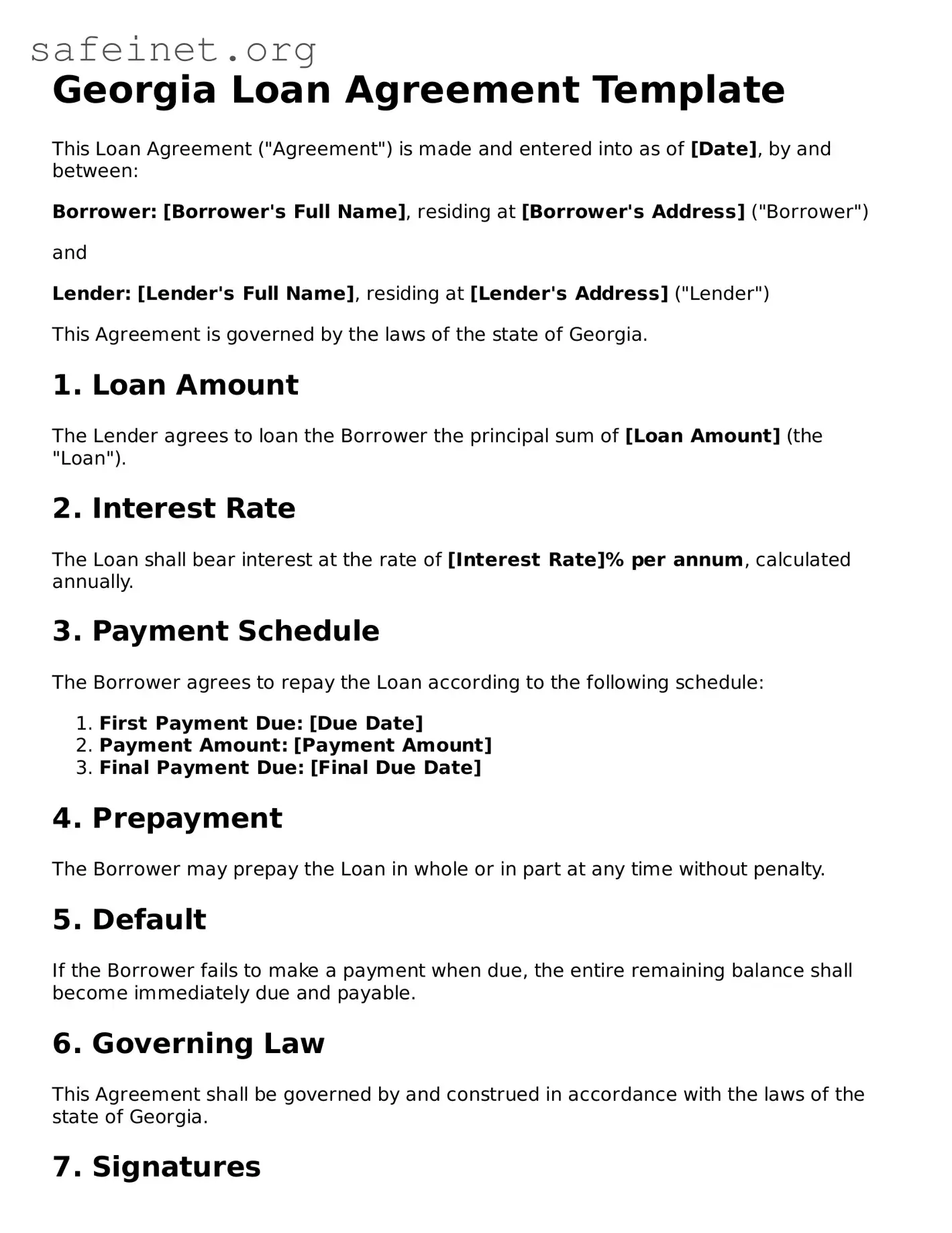Georgia Loan Agreement Template
This Loan Agreement ("Agreement") is made and entered into as of [Date], by and between:
Borrower: [Borrower's Full Name], residing at [Borrower's Address] ("Borrower")
and
Lender: [Lender's Full Name], residing at [Lender's Address] ("Lender")
This Agreement is governed by the laws of the state of Georgia.
1. Loan Amount
The Lender agrees to loan the Borrower the principal sum of [Loan Amount] (the "Loan").
2. Interest Rate
The Loan shall bear interest at the rate of [Interest Rate]% per annum, calculated annually.
3. Payment Schedule
The Borrower agrees to repay the Loan according to the following schedule:
- First Payment Due: [Due Date]
- Payment Amount: [Payment Amount]
- Final Payment Due: [Final Due Date]
4. Prepayment
The Borrower may prepay the Loan in whole or in part at any time without penalty.
5. Default
If the Borrower fails to make a payment when due, the entire remaining balance shall become immediately due and payable.
6. Governing Law
This Agreement shall be governed by and construed in accordance with the laws of the state of Georgia.
7. Signatures
IN WITNESS WHEREOF, the parties hereto have executed this Agreement as of the day and year first above written.
Borrower's Signature: ___________________________
Print Name: [Borrower's Full Name]
Lender's Signature: ___________________________
Print Name: [Lender's Full Name]
